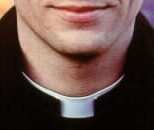What happens when a pope dies: The novendiales and the burial (part 4)
The official period of mourning usually begins when the pope dies. For nine days the Church mourns the passing of the dead pontiff. These nine days are called the novendiales ("nine days"). The day of death is usually counted as the first day of this period. But this could be altered by the cardinals as they meet at the General Congregation and as they take into consideration the new norms established by John Paul in his Apostolic Constitution Universi Dominici gregis. In the case of John Paul, the cardinals have announced that the official day of mourning will begin after the funeral at St. Peter's, in line with the Apostolic Constitution. Then, the conclave begins on April 18th, after the novendiales and the 16th day after John Paul's death--which is within the time frame prescribed by the rules promulgated for the conclave. The regulation is that the election must begin within 15 to 20 days after the pope's death.
Funeral rites are celebrated by the cardinals daily in Rome during the novendiales . Also during this time, the body of the pope will be dressed in state with the red-and-gold chasuble, which is the sole privilege of the popes, and the fanon of white silk and gold thread. [This time frame was changed in John Paul's case as the cardinals have elected to hold the novendiales after John Paul's funeral.] On his head will be placed a golden mitre, again the privilege of popes. In John Paul's case, a white miter is used trimmed with gold. Other prelates are buried with a plain white mitre (this is the tall head covering usually worn by bishops at liturgies).
Usually the body is then carried to the small Chapel of the Blessed Sacrament to the right side of the Basilica, midway up the great nave. There he will lie in state for two days without embalming. But with John Paul, this seems to have been altered. At the moment his body lies in state at the Vatican palace's Clementine Hall. His remains will then be moved to St. Peter's Basilica.
Then, at the appointed time, the body will be carried in great solemnity to the high altar of St. Peter's for the Mass of the dead. The burial usually occurs between the fourth and sixth days of the novendiales. In John Paul's case, the cardinals decided to begin the novendiales after the burial.
During the funeral at St. Peter's, after the absolution, the body will be placed into three coffins. The first coffin is made of cypress which is meant to signify that the pope is human and is buried like any common person. The second coffin is made of lead, which bears his name and the dates of his reign. Also, copies of the documents of great importance promulgated during his reign as well as the broken seal of his office (the papal ring) are placed in the lead coffin by the cardinal chamberlain. The third coffin, usually made of walnut or elm, is used to point to the dignity of the man who occupied Peter's throne.
Once the body is sealed within this third coffin, he is lowered into the crypt below St. Peter's where it will be wheeled on a wagon to the place the pope chose himself for his final resting place. Later on a sarcophagus will be made marking the grave site.
Then the vicar for Vatican City (used to be called the papal sacristan) remains behind in order to recite the Office of the Dead and to give the final blessing to the deceased's remains. This burial arrangement of course will change if John Paul chose to be buried in his native Poland.
After the nine days of official mourning are over, the cardinals then turn to the conclave to elect a new pope. The long-standing custom is that the cardinals wait fifteen to twenty days after the pope's death before entering into the task of electing a successor.
[Coming up in part 5: The preparations for the conclave. The information contained here has been updated as more details are announced by the cardinals.]
Funeral rites are celebrated by the cardinals daily in Rome during the novendiales . Also during this time, the body of the pope will be dressed in state with the red-and-gold chasuble, which is the sole privilege of the popes, and the fanon of white silk and gold thread. [This time frame was changed in John Paul's case as the cardinals have elected to hold the novendiales after John Paul's funeral.] On his head will be placed a golden mitre, again the privilege of popes. In John Paul's case, a white miter is used trimmed with gold. Other prelates are buried with a plain white mitre (this is the tall head covering usually worn by bishops at liturgies).
Usually the body is then carried to the small Chapel of the Blessed Sacrament to the right side of the Basilica, midway up the great nave. There he will lie in state for two days without embalming. But with John Paul, this seems to have been altered. At the moment his body lies in state at the Vatican palace's Clementine Hall. His remains will then be moved to St. Peter's Basilica.
Then, at the appointed time, the body will be carried in great solemnity to the high altar of St. Peter's for the Mass of the dead. The burial usually occurs between the fourth and sixth days of the novendiales. In John Paul's case, the cardinals decided to begin the novendiales after the burial.
During the funeral at St. Peter's, after the absolution, the body will be placed into three coffins. The first coffin is made of cypress which is meant to signify that the pope is human and is buried like any common person. The second coffin is made of lead, which bears his name and the dates of his reign. Also, copies of the documents of great importance promulgated during his reign as well as the broken seal of his office (the papal ring) are placed in the lead coffin by the cardinal chamberlain. The third coffin, usually made of walnut or elm, is used to point to the dignity of the man who occupied Peter's throne.
Once the body is sealed within this third coffin, he is lowered into the crypt below St. Peter's where it will be wheeled on a wagon to the place the pope chose himself for his final resting place. Later on a sarcophagus will be made marking the grave site.
Then the vicar for Vatican City (used to be called the papal sacristan) remains behind in order to recite the Office of the Dead and to give the final blessing to the deceased's remains. This burial arrangement of course will change if John Paul chose to be buried in his native Poland.
After the nine days of official mourning are over, the cardinals then turn to the conclave to elect a new pope. The long-standing custom is that the cardinals wait fifteen to twenty days after the pope's death before entering into the task of electing a successor.
[Coming up in part 5: The preparations for the conclave. The information contained here has been updated as more details are announced by the cardinals.]




<< Home